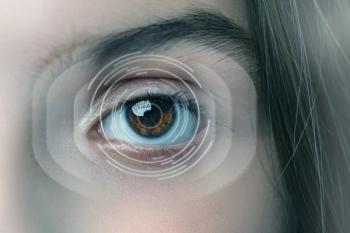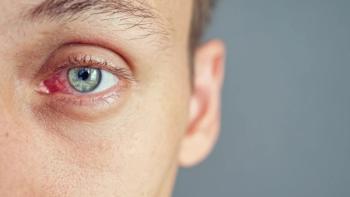
Black Patients Have Higher Risk of Vision Loss After Glaucoma Diagnosis
New research examines the disparities in vision loss in glaucoma cases.
Black patients have a dramatically higher risk of advanced vision loss after a new diagnosis of primary open angle glaucoma (POAG) when compared to White patients, a recent study found.
Published in Translational Vision Science and Technology,1 researchers at the New York Eye and Ear Infirmary of Mount Sinai (NYEE) found that being of African heritage is an independent risk factor for a drastic decline in vision after the diagnosis.
The findings should prompt more eye screening in the Black population for early glaucoma detection, The Mount Sinai Hospital/Mount Sinai School of Medicine said in a news release.2
“This study has tremendous implications for glaucoma screening of Black patients, who we already knew were a population at increased risk of glaucoma,” says senior author Louis R. Pasquale, M.D., deputy chair for ophthalmology research at the Icahn School of Medicine at Mount Sinai and Director of the NYEE Eye and Vision Research Institute. “Screening earlier in life could significantly increase the chance of detecting glaucoma and slowing down progression before it reaches one of the advanced patterns shown in our research.”
POAG is the leading cause of optic nerve degeneration that is related to the pressure level inside the eye, but other factors also contribute to this condition, Mount Sinai said. "Patients typically experience few or no symptoms until the disease progresses and they have irreversible vision loss—underscoring the need for early glaucoma screening and detection in high-risk patient groups.”
This is the first study to use an artificial intelligence algorithm to break down visual field loss in new-onset glaucoma cases among US-based population groups, according to Mount Sinai.
A team of researchers analyzed nearly 210,000 participants from 3 population-based databases of nurses and health professionals from the Nurses’ Health Study (enrolled between 1980 and 2018, and 1989-2019), and the Health Professionals Follow-up Study (enrolled between 1986 and 2018). Participants’ data was collected during comprehensive eye exams—none had glaucoma at baseline. They were followed biennially and provided updated information on their lifestyle, diet, and medical status, including glaucoma diagnosis.
Within the study group, 1946 patients developed glaucoma. Researchers analyzed their earliest record of visual field loss using archetype analysis, a form of artificial intelligence. The algorithm identified 14 archetypes: 4 representing advanced loss patterns, 9 of early loss, and 1of no visual field loss.
Although Black patients made up 1.3% of the study, they had a nearly twofold increased risk of early visual field loss archetypes, and a sixfold higher risk for advanced field loss archetypes, when compared to White patients.
“African descent is a risk factor for glaucoma blindness, and this work provides insight into why that might be the case. We suspect that the reason why Black people presented with more advanced patterns of loss compared to White people is because the disease starts 1 to 2 decades earlier in the former group compared to the latter group,” Pasquale said. "This emphasizes the importance of early screening strategies in Black patients to identify early-onset glaucoma so that visual disability in this population is averted.”
Asian participants, who constituted 1.2% of the group, had a nearly two-fold higher risk of early visual field loss compared to White patients, but did not have a dramatically higher rate of advanced patterns of visual field loss.
Hispanic patients made up 1.1 percent of the study population, and did not have an increased risk of any archetypes compared to White patients. However, the study showed they were at risk of an archetype showing initial loss near the center of their visual field.
The next step for in this research is to determine the specific risk factors for the different patterns of visual loss seen in glaucoma patients—including genetic and environmental factors, according to Pasquale.
References
1. Kang J, Wang M, Frueh L, et al. Cohort study of race/ethnicity and incident primary open-angle glaucoma characterized by autonomously determined visual field loss patterns. Transl Vis Sci Technol. 2022 Jul 8;11(7):21. doi: 10.1167/tvst.11.7.21.
2. Black patients found six times more likely to have advanced vision loss after glaucoma diagnosis than white patients. News release. The Mount Sinai Hospital/ Mount Sinai Schools of Medicine. July 25, 2022. Accessed August 7, 2022.
Newsletter
Pharmacy practice is always changing. Stay ahead of the curve with the Drug Topics newsletter and get the latest drug information, industry trends, and patient care tips.















































































































